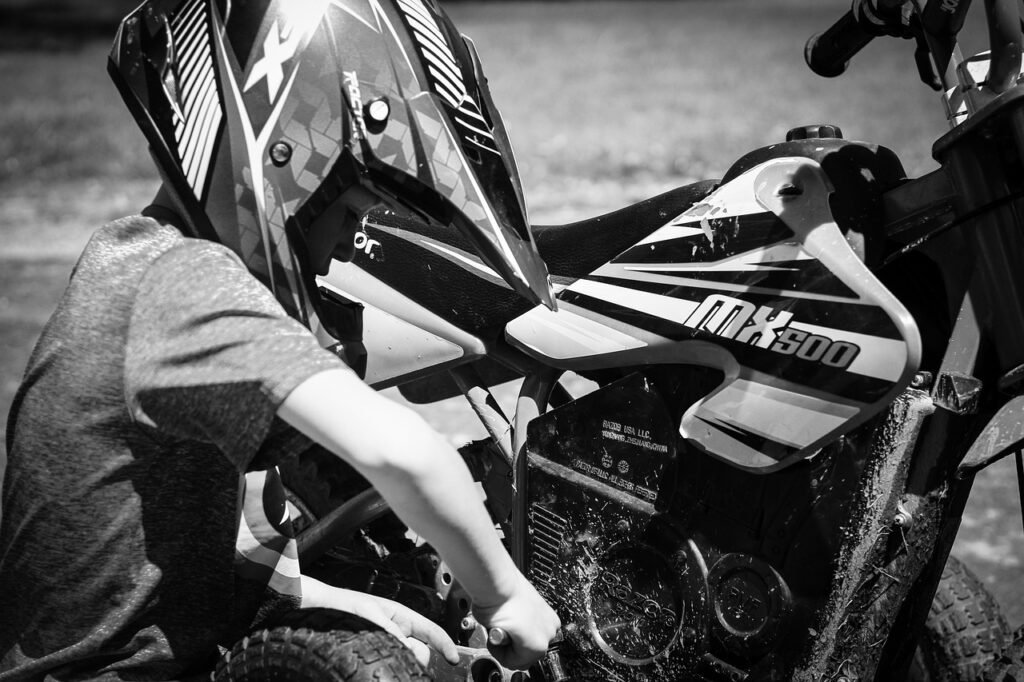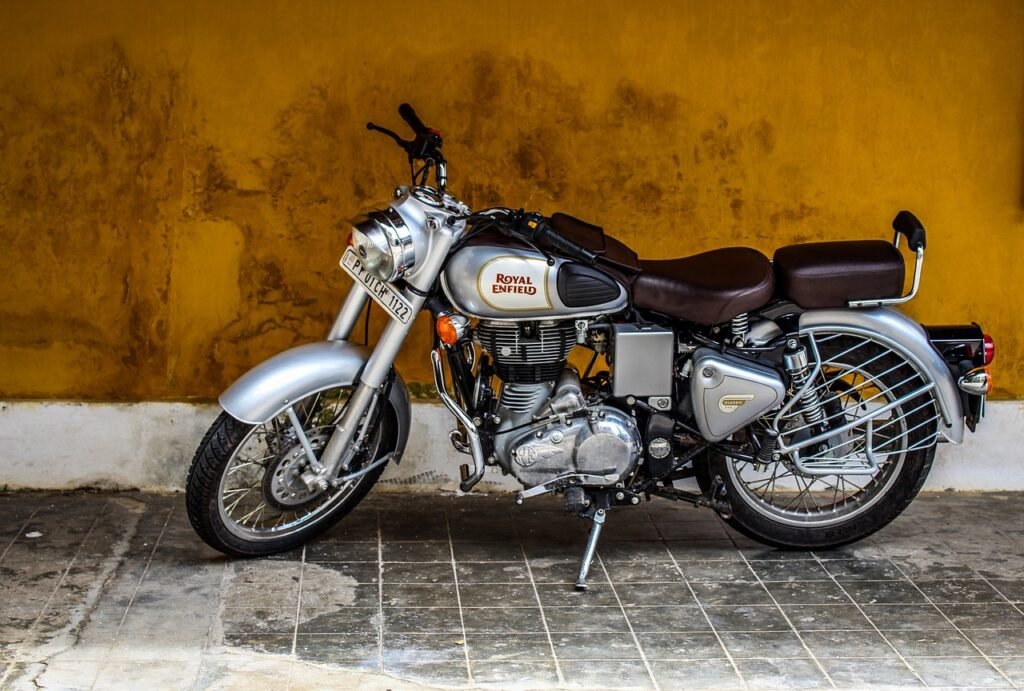Hey there! If you’re a bike owner looking to save time and money on maintenance, you’re in the right place. In this article, we’ll cover some easy DIY bike maintenance tips that will help keep your ride running smoothly. From basic cleaning to tire inflation and chain lubrication, these simple tasks can keep your bike in top shape and avoid costly trips to the repair shop. Read on to learn how to maintain your bike like a pro! Have you ever wondered how you can keep your bike in top running condition without having to take it to a professional mechanic every time something goes wrong? Well, look no further! In this article, we will provide you with easy DIY bike maintenance tips that will help you save time and money while keeping your bike in great shape. Let’s get started!
Basic Tools You’ll Need
Before we dive into the world of DIY bike maintenance, it’s important to make sure you have the right tools on hand. Here are some essential tools every bike owner should have in their toolkit:
- Allen keys: These are essential for adjusting components like handlebars, seat height, and brake calipers.
- Wrenches: A set of wrenches will come in handy for tightening or loosening bolts and nuts.
- Screwdrivers: Both flathead and Phillips screwdrivers are necessary for various adjustments on your bike.
- Tire levers: These will make it easier to remove and install tires when needed.
- Chain tool: Essential for fixing chain issues such as broken links or a stuck chain.
- Pump: Make sure you have a pump that is compatible with your bike’s tire valve type.
Now that you have the basic tools, you’re ready to start maintaining your bike like a pro!
Cleaning Your Bike
One of the most important aspects of bike maintenance is keeping your bike clean. Dirt, grime, and mud can not only make your bike look unsightly but can also cause damage to the components over time. Here’s how you can clean your bike effectively:
- Start by using a hose or bucket of soapy water to gently wash off any dirt and grime from the frame, wheels, and components.
- Use a soft brush or sponge to scrub hard-to-reach areas like the chain, cassette, and derailleur.
- Rinse off the soap with clean water and dry your bike thoroughly with a clean towel.
- Make sure to reapply lubricant to the chain after cleaning to prevent rust and ensure smooth shifting.
By keeping your bike clean, you not only improve its appearance but also extend the life of its components.

This image is property of pixabay.com.
Inspecting Your Bike Regularly
Regular inspections of your bike can help identify potential issues before they turn into major problems. Here are some key areas to inspect on a routine basis:
- Tires: Check tire pressure regularly and look for any cuts, bulges, or wear on the tire tread. Inflate tires to the recommended pressure as stated on the sidewall.
- Brakes: Inspect brake pads for wear and make sure they are aligned properly with the braking surface. Test the brakes to ensure they are responsive and make any necessary adjustments.
- Drivetrain: Check the chain for signs of wear and lubricate regularly. Inspect the cassette, chainrings, and derailleurs for any damage or misalignment.
- Suspension: If your bike has suspension components, check for any leaks, listen for unusual noises, and ensure the suspension is functioning correctly.
- Frame: Inspect the frame for cracks, dents, or any signs of damage that could compromise its integrity.
By inspecting your bike regularly, you can catch minor issues early and prevent more significant problems down the road.
Adjusting Your Bike’s Gears and Brakes
Properly functioning gears and brakes are crucial for a safe and enjoyable ride. Here’s how you can adjust your bike’s gears and brakes on your own:
Gears
- Shift through each gear and observe how smoothly the chain moves between gears.
- If the chain is slow to shift or skips gears, adjust the barrel adjuster on the derailleur until the shifting is smooth.
- Make sure the chain is properly aligned with the rear and front derailleur cogs to prevent chain rub and premature wear.
Brakes
- Check brake pad alignment and adjust as needed to ensure even contact with the wheel rim or rotor.
- Test the brake levers for responsiveness and adjust the cable tension if needed for better stopping power.
- Check for any brake rub when the levers are not engaged and adjust pad alignment accordingly.
By fine-tuning your bike’s gears and brakes, you can improve performance and safety on your rides.

This image is property of pixabay.com.
Keeping Your Chain Lubricated
A well-lubricated chain can make a significant difference in the smoothness and efficiency of your bike’s drivetrain. Here’s how you can keep your chain properly lubricated:
- Clean the chain with a degreaser and rag to remove any dirt or old lubricant.
- Apply a small amount of bicycle-specific lubricant to each chain link and wipe off any excess.
- Let the lubricant sit for a few minutes before wiping the chain down again to remove any residual buildup.
By keeping your chain properly lubricated, you can reduce friction, prevent rust, and prolong the life of your drivetrain components.
Fixing a Flat Tire
Dealing with a flat tire is a common occurrence for cyclists, but it doesn’t have to ruin your ride. Here’s how you can fix a flat tire on your own:
- Remove the wheel from the bike and deflate the tire completely by pressing on the valve stem.
- Use tire levers to carefully remove the tire from the rim and inspect the inner tube for the puncture.
- Patch the hole in the tube or replace it with a new tube if the damage is severe.
- Carefully re-seat the tire on the rim, inflate it to the recommended pressure, and reattach the wheel to the bike.
By knowing how to fix a flat tire, you can get back on the road quickly and confidently without having to rely on outside help.

This image is property of pixabay.com.
Adjusting Your Bike’s Seat Height and Angle
Having the correct seat height and angle is essential for comfort, efficiency, and injury prevention. Here’s how you can adjust your bike’s seat correctly:
- Sit on the bike and position the pedals so that one is at its lowest point. Your leg should be almost fully extended when your foot is on the pedal at this position.
- Adjust the seat height up or down until your leg has a slight bend at the bottom of the pedal stroke.
- Check the seat angle to make sure it is comfortable and supports your riding position.
By adjusting your seat height and angle correctly, you can improve your riding experience and reduce the risk of discomfort or injury on longer rides.
Replacing Your Bike’s Brake Pads
Worn brake pads can reduce stopping power and compromise safety on your bike. Here’s how you can replace your bike’s brake pads with ease:
- Remove the wheel from the bike and loosen the brake caliper mounting bolt to release the old brake pads.
- Slide the old brake pads out of the caliper and inspect them for wear. Replace them if the grooves are worn down and the brake pad material is thin.
- Install the new brake pads into the caliper and align them with the braking surface on the wheel rim or rotor.
- Reattach the caliper and wheel, and test the brakes to ensure they are working correctly.
By replacing your bike’s brake pads when needed, you can maintain optimal stopping power and ensure a safe riding experience.
Tightening Loose Bolts and Nuts
Over time, vibrations and riding conditions can cause bolts and nuts on your bike to come loose. Here’s how you can tighten these components to prevent damage or potential safety hazards:
- Use the appropriate sized wrench or Allen key to tighten loose bolts or nuts on your bike’s components.
- Check critical areas such as handlebars, stem, seat post, brake calipers, and derailleurs for any loose fasteners.
- Make sure not to overtighten bolts, as this can cause damage to the threads or components.
By regularly checking and tightening loose bolts and nuts, you can prevent parts from coming loose while riding and ensure your bike is safe and secure.
Wrapping Up
Congratulations on making it through our easy DIY bike maintenance tips! By following these simple guidelines and taking the time to care for your bike, you can enjoy many more miles of smooth and trouble-free riding. Remember, proper maintenance is key to keeping your bike in top condition and ensuring a safe and enjoyable cycling experience every time you hit the road. Happy riding!
